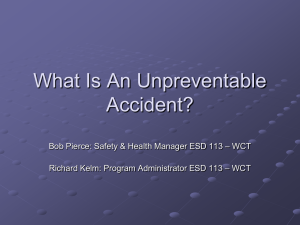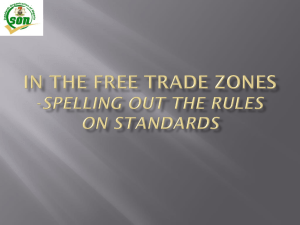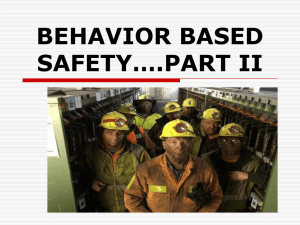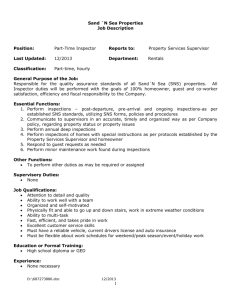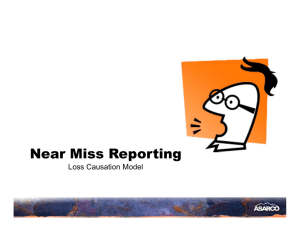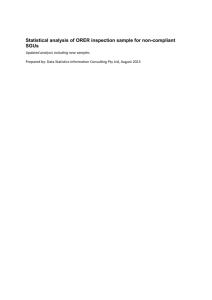Inspections Update No 7 - Clean Energy Regulator
advertisement
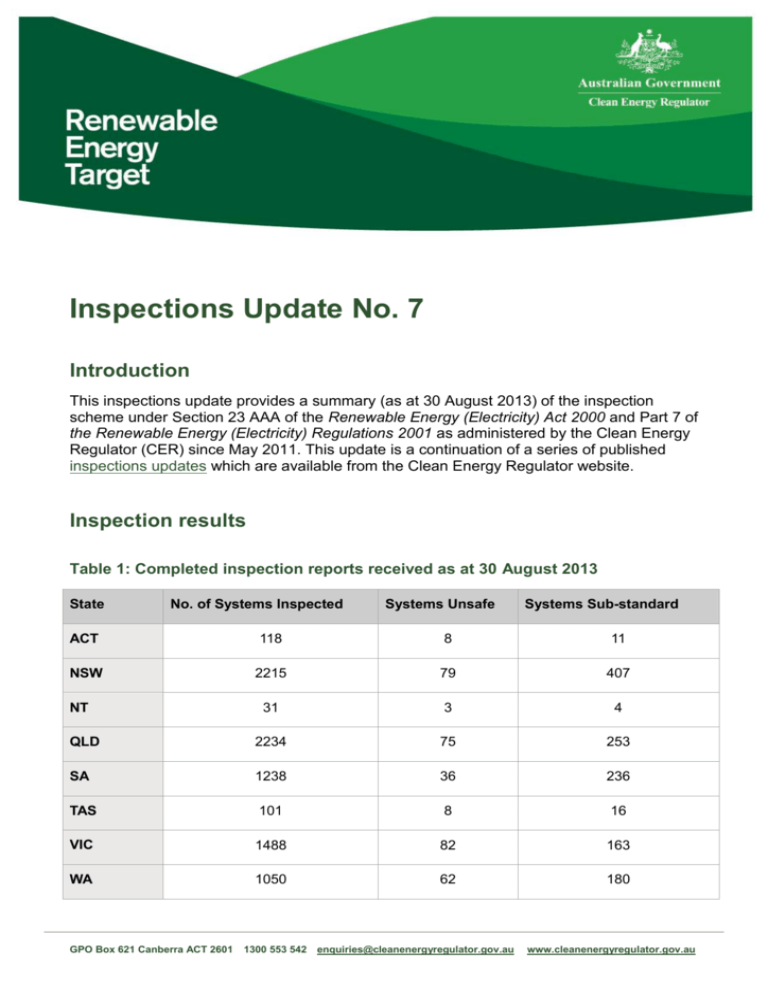
Inspections Update No. 7 Introduction This inspections update provides a summary (as at 30 August 2013) of the inspection scheme under Section 23 AAA of the Renewable Energy (Electricity) Act 2000 and Part 7 of the Renewable Energy (Electricity) Regulations 2001 as administered by the Clean Energy Regulator (CER) since May 2011. This update is a continuation of a series of published inspections updates which are available from the Clean Energy Regulator website. Inspection results Table 1: Completed inspection reports received as at 30 August 2013 State No. of Systems Inspected Systems Unsafe Systems Sub-standard ACT 118 8 11 NSW 2215 79 407 31 3 4 QLD 2234 75 253 SA 1238 36 236 TAS 101 8 16 VIC 1488 82 163 WA 1050 62 180 NT GPO Box 621 Canberra ACT 26011300 553 542enquiries@cleanenergyregulator.gov.au www.cleanenergyregulator.gov.au State Total No. of Systems Inspected 8475 Total per cent Systems Unsafe Systems Sub-standard 353 1270 4.2% 15% As of 30 August 2013, the Regulator has been advised that fewer than five per cent (4.2% or 353) of solar PV systems inspected were assessed as unsafe as defined in the CER inspection checklist, a relatively stable rate since inspections commenced (Table 2). An unsafe system is defined as a possible safety hazard which poses an imminent risk of damage to property or persons. Examples of an unsafe system is one that has been assessed as having either; direct current isolator enclosures, or junction boxes, that were not suitably installed to prevent water ingress, or had signs of water damage present; issues with the panel mounting, or; exposed live parts. These issues are directly attributable to poor installation practices and/or the use of inappropriate hardware, and indicate a failure to comply with basic electrical installation competencies. The CER has endeavoured to work in conjunction with industry and state and territory electrical regulatory authorities in addressing identified unsafe issues. Actions taken as a result of the systems being classified as unsafe: The system was shut down or otherwise rendered safe by the inspector. The owner and/or occupier of the premises were advised by the inspector of the nature and extent of the safety risk. The relevant state or territory regulation authorities and energy network provider were advised by the inspector of the nature and extent of the safety risk. 15 per cent (15% or 1270) of solar PV systems were assessed as substandard and required work to rectify the installation. A substandard system is defined as one that: does not meet key clauses in the standards and requirements for installation and may lead to premature equipment failure or other issues, does not pose an imminent safety risk, or the installation work and/or the equipment should be improved to meet relevant standards and industry guidelines. Of the substandard solar PV systems the vast majority (over 90%) had direct current isolator issues, including DC isolators that were; incorrectly rated for the voltage and/or current output of the system; polarised or otherwise incorrectly wired, or; not rated for direct current. A small proportion had workmanship issues relating to wiring or brackets. GPO Box 621 Canberra ACT 26011300 553 542enquiries@cleanenergyregulator.gov.au www.cleanenergyregulator.gov.au Substandard rates have seen a gradual decline (Table 2) which has coincided in increased communication by industry to installers on the correct installation of polar sensitive DC circuit breakers. Actions as a result of substandard classification and requiring rectification work: The owner and/or occupier of the premises were advised by the inspector of the nature and extent of the risk posed by the substandard issues. The relevant state or territory regulatory authorities were advised by the inspector of the nature and extent of the risk posed by the substandard issues. Table 2: Summary data of Inspection Updates one to seven GPO Box 621 Canberra ACT 26011300 553 542enquiries@cleanenergyregulator.gov.au www.cleanenergyregulator.gov.au

